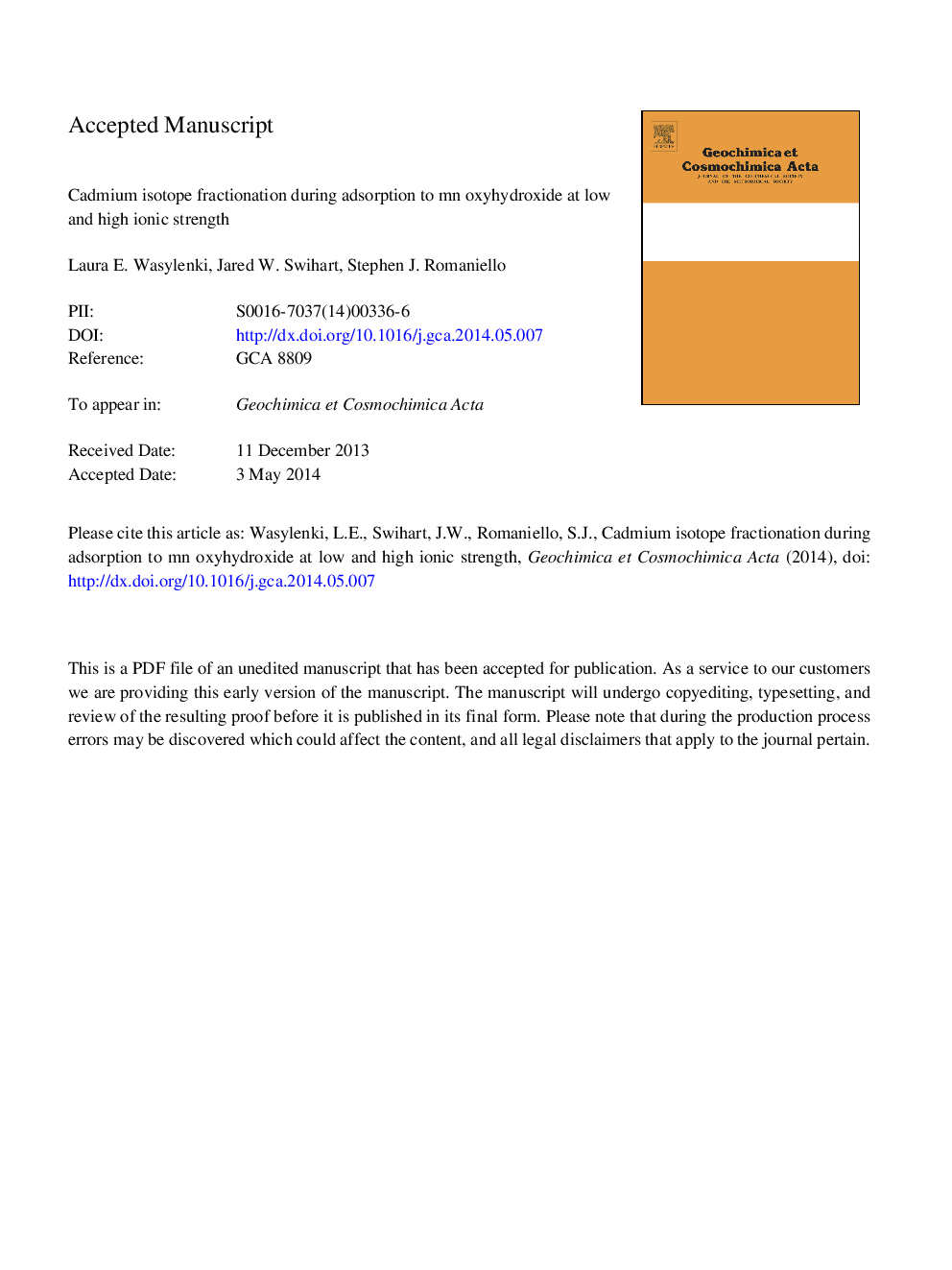| Article ID | Journal | Published Year | Pages | File Type |
|---|---|---|---|---|
| 6438358 | Geochimica et Cosmochimica Acta | 2014 | 15 Pages |
Abstract
We report results of experiments conducted to quantify the sense and magnitude of cadmium stable isotope fractionation during sorption to synthetic birnessite (Mn oxyhydroxide) and to constrain the molecular mechanism responsible for fractionation in this system. Ferromanganese crusts have recently been proposed as a possible archive of the cadmium isotopic composition of seawater over the last few tens of millions of years (Horner et al., 2010), and this archive can potentially yield information about biological use of Cd by diatoms over the Cenozoic Era. Cd isotopes may also be useful for determining the extent to which sorption to mineral substrates attenuates Cd transport in contaminated aquifers. At low ionic strength, we found a small fractionation effect (Î114/112Cdfluid-solid = +0.12 ± 0.06â°, 1 sd; equivalent to +2.4 in terms of ε114/110Cd) that was constant as a function of the fraction of total Cd sorbed, indicating a reversible equilibrium isotope effect. At high ionic strength we observed a fractionation averaging (Î114/112Cdfluid-solid = +0.27 ± 0.07â° (1 sd; equivalent to +5.4 in terms of ε114/110Cd). A time series conducted at high ionic strength revealed that the magnitude of isotopic fractionation decreases gradually over time, from Î114/112Cdfluid-solid of nearly +0.4â° after 1 h to +0.2â° after 24 h and +0.1â° after 912 h. Furthermore, the percentage of Cd sorbed to birnessite increases over this interval from 27% to 58%. We hypothesize that this shift results from either changes over time in the structure and crystallinity of birnessite and/or a change in the molecular mechanism of sorption of cadmium on birnessite. Our result is encouraging for application of Cd isotopes in ferromanganese crusts to reconstruction of the Cd isotopic composition of coexisting seawater, given the very slow accumulation rates of such sediments.
Related Topics
Physical Sciences and Engineering
Earth and Planetary Sciences
Geochemistry and Petrology
Authors
Laura E. Wasylenki, Jared W. Swihart, Stephen J. Romaniello,
